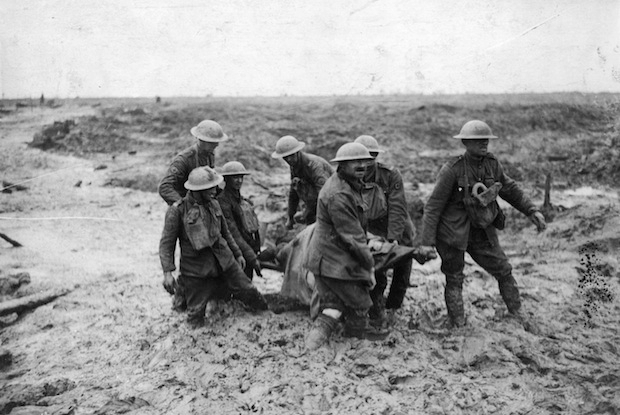Countless writers and film-makers this year will be trying their hand at forcing us to wake up and smell the first world war. How do they plant a fresh, haunting, horrifying image into our unwilling and saturated heads? We know it all: the trenches, the mud, the shell holes, the rats, the man plodding towards the house with the telegram, the local surnames repeated with different initials on the war memorial. All very much in the ‘too sad to think about’ department, particularly if you love Edwardian children’s stories and start contemplating What Happened to Oswald Later.
Helen Dunmore, an assured writer who in a previous novel has forced us to live through the siege of Leningrad with its freezing and starving babies, does not shirk from her task. She really does make us wake up and smell it: mainly the mud. The Lie is a mud-clagged, death-clagged, haunted book, written in the first person in the present tense, and I must say, it stays with you.
It is set in 1920 in Cornwall: a far cry from the horror, you might think; but the novel opens with a terrifying apparition of the narrator Daniel’s childhood best friend Frederick, standing at the end of the bed:
He comes to me, clagged in mud from head to foot. I can smell the mud. You never forget the reek of it. Thick, almost oily, full of shit and rotten flesh, cordite and chloride of lime.
We think of the No Man’s Land of the first world war as a place of utter desolation; this book shows how that desolation followed the survivors back to England and laid waste to their lives. The homeland to which they return becomes another kind of No Man’s Land. Rarely have I felt so strongly the blankness and loneliness of an aftermath. The 1920 part of the story is quite strange: a very old lady called Mary Pascoe, who lives in a remote Cornish cottage, dies a natural death, and Daniel buries her in her peaceful garden, as she would have wished, rather than reporting her death to the authorities. Is this The Lie of the title, or is there a deeper lie to do with exactly how Frederick died in the Flanders mud? This is the question that drives the novel.
Daniel moves into Mary Pascoe’s cottage, plants seeds, lights fires and keeps a goat. This, at least, seems a peaceful post-war life. But in mid-thought, the flashbacks come. For example:
How can a man be there, entire, one second, and the next there is nothing left of him? It ought not to be possible. Even if you’ve seen it you can’t believe it. It’s the filthiest conjuring trick you can think of.
Side by side with these horrible flashbacks of pulverised soldiers, lovely flashbacks also come: memories of Daniel and Frederick’s childhood friendship, rich and full of delight, with picnics, poems and ponies, Frederick the boy from the Big House, Daniel the gardener.
Frederick’s sister Felicia is alive and skeletal in 1920 and still rattling around in the unheated Big House, with her baby whom her young husband never met, as he was (as the Daniel puts it) ‘one of the unlucky buggers who thought they’d begun something, when it was all finishing for them’. The aftermath friendship between Daniel and Felicia provides the book with its only breath of warmth, and it is extremely touching. At least Daniel manages to get the blocked furnace going in Felicia’s house, so she won’t physically freeze to death, although her life and soul are frozen by what has happened to her.
‘A memory like mine,’ writes Daniel, ‘is more a curse than a blessing. It cuts into the past, as sharp as a knife, and serves it up glistening.’ Dunmore has brilliantly served up this past to us in way that does not allow us to forget it.






Comments